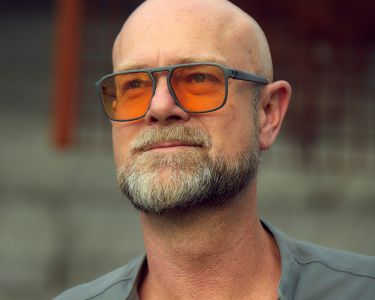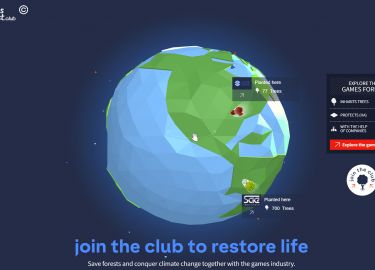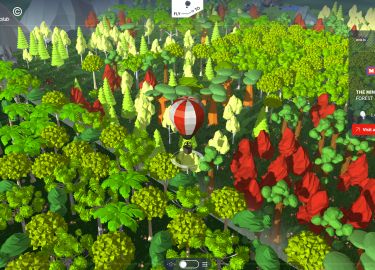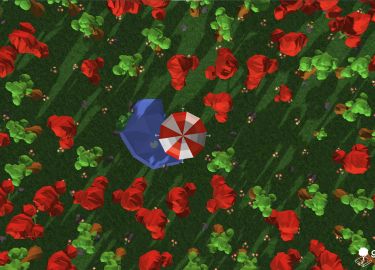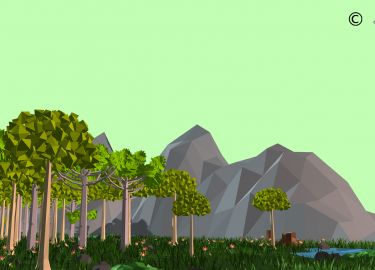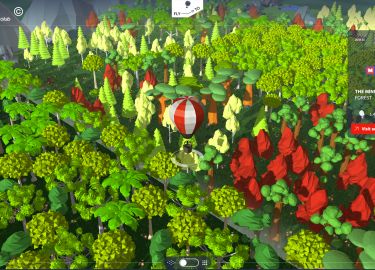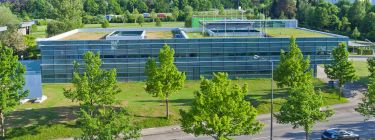
A Program for Culture at the Crossroads
Prof. Dr. Miachael Resch, Director of HLRS High-Performance Computing Center, Stuttgart; Prof. Dr. José Teixeira Coelho Netto, Curator at Media Solution Center, Baden-Württemberg; Matthias Hauser, General Manager at Media Solution Center, Stuttgart
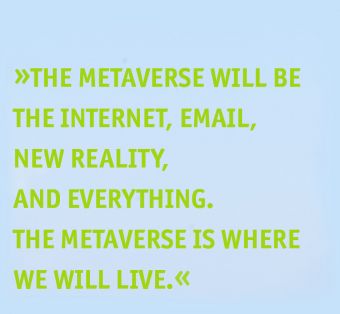
A Program for Culture at the Crossroads
Mission accomplished?
The world is about to enter the Metaverse, says Mark Zuckerberg. The Metaverse, in his vision—or in his eagerness for more power and wealth disguised as a noble contribution to humanity—is a virtual place where we work, have fun, meet friends, watch movies, play games, and, most of all, consume. The Metaverse will be the internet, email, new reality, and everything. The Metaverse is where we will live. Monika Bickert, Metaverse’s vice-president in charge of policy content, wrote an article for Le Monde on November 10, 2021, in which she stressed that the Metaverse is a new kind of life.Facebook, Mark Zuckerberg’s previous company name that he is now trying to sweep under the rug, claims to have 2.9 billion users in 2021. It may be so. If it is, the foundations for Zuckerberg’s Metaverse have already been laid—in a very short time, considering Facebook’s founding in 2004. The Metaverse is not here yet, but Facebook is—and Facebook is the dress rehearsal for the Metaverse.
Picture above: High-Performance Computing Center HLRS University of Stuttgart, Copyright: Boris Lehner for HLRS
Picture left:
The impending Metaverse—as the successor of Facebook in a family that houses its siblings Twitter, Instagram and TikTok—is not an index of a recent crisis: it configures a dynamic that has been going on for quite some time now. However, this crisis—or moment of decision, in its etymological meaning—has become acute in the last couple of years. Everywhere voices are warning that either we do something now or humanity may lose its grip on its destiny. The remarkable novel The Machine Stops1, published by E.M.Forster in 1909, was at the time considered to be just a piece of futuristic divertissement. But its depiction of a proto-Metaverse shows all the characteristics Mark Zuckerberg boasts about his project. Forster’s book was a fantastic effort to anticipate a reality in which humanity has been increasingly living since then, with some dramatic peaks in the last couple of years—one of them being the attempt to invade the Capitol on January 6, 2021, to keep Donald Trump in power. Even our contemporary social media is described in 1909 as the „behavior modification empire“.This description is a rather generic, mild, and euphemistic label and could equally apply to the movie industry, the television industry, and much more. Therefore, we prefer to name it more straightforwardly: antisocial media.
As the computer scientist Jaron Lanier, author of Ten Arguments for
Deleting Your Social Media Accounts Right Now (2018), argued, social media is a challenge to humanity just as serious as the greenhouse effect. So, it is appropriate to say that media are responsible for the “greenhouse effect of the mind” based to a large extent on artificial intelligence and its supporting algorithms.
We could better understand the new developments by looking at ourselves, our perceptions, and our ideas about the world around us. The French philosopher and sinologist Francois Jullien has compared Chinese and European views of the world2 (The Propensity of Things: Toward a History of Efficacy in China, 1999). He concludes that our European view of the world is shaped by our looking for an ideal (eidos), aiming at modelling the world such that we can achieve that ideal. As a consequence, we tend to think in models. It seems to be obvious that thinking in models has led us to describe the world in mathematical terms. This method was feasible as long as that description did not spin out of control. With the advent of the computer, our mathematical description of the world has become the dominant (for some the only) and most efficient description of the world. Artificial Intelligence now aims to turn a de-scription into a pre-scription to use our mathematical models to control our world better.
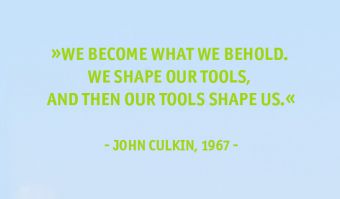
Several human hopes and desires are driving this prescription. Mathematical models avoid ambiguity by helping us to identify specific solutions in an ambiguous world. We can further claim that our solutions are not distorted by human intervention, with mathematical algorithms executed by a flawless machine—only experts understand that computers are neither flawless nor do they operate without human intervention. The idea of excluding human error allows us to pretend that our digitally created realities based on mathematical models are just—devoid of any prejudice and human flaws. In addition to this idea of an artificially created intelligence, the vision of creating life without resorting to nature is tempting, especially if we believe that this is a species created only from human minds and exempt from all the flaws that come with the dirty and mortal nature that surrounds us.
Our enthusiasm for our creations leads us to ignore the warning issued by John Culkin in 1967: „We become what we behold. We shape our tools, and then our tools shape us.“ Taking the models we create for reality has always been the danger of our model-based approach
to the world. Unfortunately, with the computing power in our most current systems, these models get a life of their own and start to spin out of control. This fact itself is a reason to reflect on our understanding of the digital world. Nevertheless, we see disturbing developments that point to human beings‘ abuse of digital technologies beyond that.
After all, Jaron Lanier may have pushed too hard when he called people to delete their „antisocial“ media accounts. He should have stopped short of throwing away the baby with the bathwater. Were it not for the digital tools, to mention one specific event—the ongoing Covid 19 pandemic—the disaster might have been even more extensive. However, his warning is most welcome.
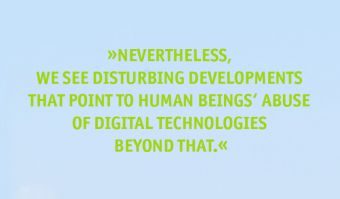
A Program to Address the Situation
If there is still time to remedy this situation, the solution lies in the complete understanding of the meaning of the term “antisocial media” and, in a broader sense, of eCulture. „Understand in order to control,” warned Ludvig Wittgenstein. Humanity must understand eCulture, or eCulture will completely control humanity. Of course, that has always been the issue with every new technology, be it the horseless vehicle, photography, movies, radio, or television. However, none of these innovations compares with the overwhelming power and ubiquitous presence of the antisocial media and artificial intelligence, which have been developing in eCulture—probably the final cultural utopia. Of course, a utopia may be a dystopia or a utopia—that is up to humanity to decide. In order to contribute to the effort towards a utopian eCulture, the Media Solution Center (MSC) has developed the „Reach“ project aiming to promote the understanding of eCulture in as many fields as possible—in the arts, culture, economy, social behaviour—and to create the conditions for eCulture to become a fundamental tool to the advancement of knowledge in a way that promotes civilisation. eCulture has the potential to achieve this goal if humanity can control it. This would be a renaissance.
MSC’s major all-encompassing step is the promotion of the necessary merging between the Humanities (understood as a general umbrella term covering philosophy, the arts, and the disciplines that study the different aspects of human society and its culture) and the Sciences. We have been talking about interdisciplinarity at least since the mid-20th century. Now it is not a question of opting for interdisciplinarity anymore: it has become imperative. A single initiative will not solve a crisis like the one we have experienced in the last couple of years.
If it has been possible for humanity to get an image of the M87* black hole fifty-three million light-years away from Earth, it is because eight observatories scattered all over the Earth convened to transform themselves into one vast and integrated telescope the size of this planet.3 It will take an effort of the same magnitude, probably even more extensive, to confront the Metaverse.
The 21st century saw the emergence of a generation native to eCulture, compared to the older generations for whom it was a novelty. The aggregate power of this new generation provides a unique tool in the forging of a new age for humanity. The MSC wants to be an active part in the effort to avoid a situation in which the limitations of artificial intelligence and its algorithms become the limits of humanity.
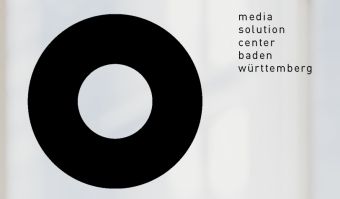
MSC has therefore structured its Reach Project as the Research and Creation Center for eCulture and the Humanities. The Center intends to develop a program building a bridge over the ever-growing gap between the Humanities and science and technology. This distancing between the two fields has become widely addressed since the beginning of the 20th century—the conflict between the „two cultures” C.P. Snow described in his 1959 eponymous book.4
Picture left: Logo Media Solution Center Baden-Württemberg
Mission One: Converging Humanities and Science
MSC’s Reach project’s first mission is to support and amplify the conversation between the Humanities and the „hard“ sciences. The Reach Project will not directly address science and digital technology. It will also investigate eCulture as the medium to which science, digital technology, and the Humanities converge to create a distinctive culture, a culture that can face the Metaverse. MSC’s principal arm for that is its academic, nonprofit research program dedicated to today’s culture’s complex and multidisciplinary study. This program includes contributions from the most diversified areas, including physics, neurosciences, biology, the study of social systems, and other complex approaches to the way we are living today surrounded by the internet and all forms of virtual representations. This program will consist of lectures, colloquia, seminars, and short duration courses oriented by the just-in-time principle, as opposed to the just-in-case principle.
Mission Two: CreativeLab
Reach’s second mission—where MSC leaves the academic field to tackle the thing itself—is to support young professionals in their projects leading to the creation of start-ups involved in using the current cutting-edge technology, especially artificial intelligence. This support will come through Reach’s CreativeLab, which will host collectives organised around professional projects requiring cutting-edge studies and all the material and economic support they may need, either in campus residencies or virtually. Creativity plus an understanding of what is going on is the underpinning of the CreativeLab.
Mission Three: Observatory of eCulture
Reach’s third mission is creating an Observatory of eCulture that will gather information about all things related to eCulture, from the internet to robotics to the social impacts of digital technology. Data—especially Big Data—have already been identified as the new source of wealth and power. However, there is barely any research by any creative initiative that does not depend on a well-organized information centre resulting from constant, attentive, and active observation of the world. Therefore, identifying, storing, and analysing the gathered information has become necessary.Reach’s three missions are enabled by the Network the MSC is part of: The HLRS, the High-Performance Computing Center with its supercomputer, the HdM Stuttgart Media University, with its highly specialised faculties, and the Core-Partner ZKM, Center of Art and Media Karlsruhe. These are unique assets not found elsewhere. As a result, MSC has the concept, the material means, and the people to concisely drive this project into reality. And it will—and it will thus be a focal point for this Renaissance in the Making.
Where: at the High-Performance Computing Center HLRS University of Stuttgart, directed by Prof. Dr. Michael Resch, and the Media Solution Center MSC, directed by Matthias Hauser. Duration: as long as it takes.
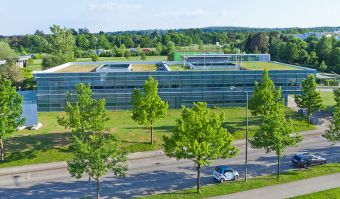
Picture above: High-Performance Computing Center HLRS University of Stuttgart, Copyright: Boris Lehner for HLRS
References
1 E.M. Foster, The machine stops, Penguin Classics, 2011
2 Francois Jullien, The Propensity of Things: Toward a History of Efficacy in China, Merve, 1999
3 The Astrophysical Journal 901:67, September 20, 2020
4 C.P. Snow, The Two Cultures, 1959.
Matthias Hauser
Matthias Hauser has had extensive experience managing the dialogue between Art and Technology. He received a formal education in music. During his professional career as a musician, Matthias Hauser understood that art is a comprehensive system with specific artistic languages in dialogue. His experience in Art Education as a professor of violoncello acquainted him with introducing people to art – which is the base of his arts management practice.As director of an art gallery in La Coruña and Stuttgart for fifteen years, Matthias developed special projects involving art and cutting edge technology for Brands such as Rolls Royce during the 31 edition of Sao Paulo’s Biennial, Gallery Weekend Berlin, and Multimedia Art Dialogues at the Main Palais, Frankfurt. In 2019 Matthias was appointed as the first director of the Media Solution Center in Stuttgart (MSC) – an extension of the High Computing Center (HLRS) at the University of Stuttgart. The MSC bridges between HLRS’s computing capacity — one of the largest high-performance computers– and the needs of industries, corporations, research centers, art institutions, and social organizations in computing resources. Matthias Hauser will face the challenge of creating the conditions for individuals, collectives, and institutions to realize their goals.
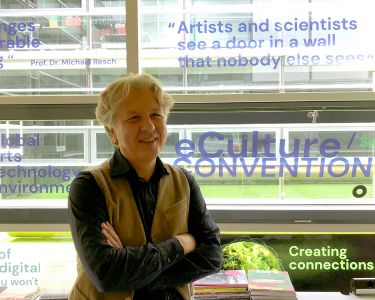
Prof. Dr. Michael Resch
Prof. Michael Resch is the director of the German National Supercomputing Center HLRS and the director of the Institute for High Performance Computing at the University of Stuttgart He is a member of the board of trustees of the Center for Art and Media Karlsruhe (ZKM) and an advisory member of the board of trustees of the German Schiller Association. He is a member of the University Council of the University of Stuttgart and a member of the consulting committee of the Film Akademie Ludwigsburg. He was a Co-founder of the Media Solution Center in 2018 and a Co-founder of the Automotive Solution Center Stuttgart in 2008. Prof. Resch was awarded an honorary professorship in 2014 and an honorary doctoral degree in 2011 by the Russian Academy of Science and an honorary doctoral degree in 2009 by the Donezk National Technical University. Michael Resch is a PI since 2007 in the German clusters of excellence for “Simulation Technology” (2007 – 2018) and “Data-Integrated Simulation Technology” (2019 – 2025) as part of the German Initiative for Excellence in Research. Michael Resch holds a Dipl.-Ing. (MSc) in Technical Mathematics (Technical University of Graz/Austria) and a PhD in Engineering from the University of Stuttgart.
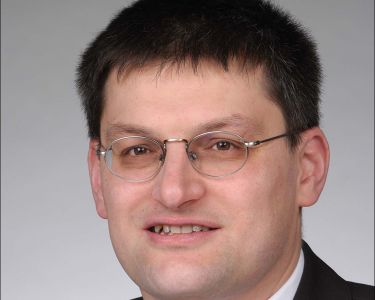
Prof. Dr. José Teixeira Coelho Netto
Dr. Teixeira Coelho is the coordinator of a research group on Computational Cultures and Humanities at the Institute of Advanced Studies of the University of São Paulo, from which he received in 2015 the honorific title of Professor Emeritus for his accomplishments in research, teaching and extension services to the community. He was the director of the Museum of Contemporary Art of São Paulo, which has the most important collection of modern art in Brazil, and the chief curator of Masp – São Paulo Art Museum, a major institution of art in the South Hemisphere. Formerly professor at the Institute of Architecture of University Mackenzie in São Paulo, he has been invited for a number of universities around the world and was granted fellowships from the Fulbright Foundation, Rockefeller Foundation, Japan Foundation and the São Paulo Foundation for the Support of Science, among others. He has published a large number of books on art, culture and cultural policy, among them eCulture, The Final Utopia (2020) and Signs and Wonders (in the Digital Age), 2021. He was also awarded a Portugal Telecom Prize for Literature in Portuguese for his novel História Natural da Ditadura. Since 2020, he has held the position of curator at the MSC.
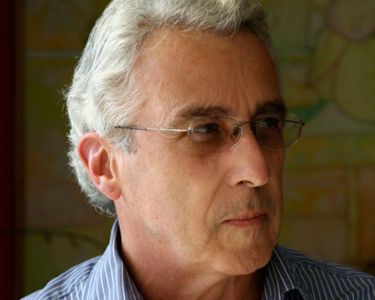
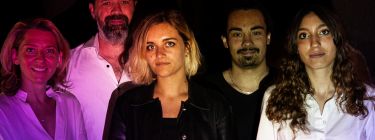
We are all Creative Tech-ers!
Laure Kaltenbach, Chairman and co-founder of CreativTech, curator and scenographer; Faustine Charles, Lydia Meignen, Paris
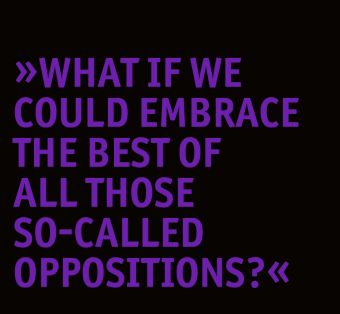
We are all Creative Tech-ers!
Why choose between artists and engineers
Chicken or egg, tea or coffee, maths or literature, music or sport, nuclear or green, left or right brain, passion or reason, artist or engineer? Do we really need to choose in every compartment of our lives? What if we could embrace the best of all those so-called oppositions?
The artist, a figure integrated into our socioeconomic models
The opportunities of the health crisis for Culture?
As in all crises, we realise the extent to which culture plays an essential, central, and apodictic role in expressing itself, through the arts, in entertaining ourselves, promoting values, creating cohesion, in giving meaning to what seems to have none. The current health crisis is no exception to the rule and new forms of creation have multiplied to experience this unprecedented time of collective global confinement. Among the encouraging examples, the creation in Italy of Special Artistic Continuity Units (Usca) by the company il Barbonaggio Teatrale with theatre on delivery—the theatre at home—was conceived in response to the prolonged closure of cultural venues. From now on, it is possible to welcome a plastic work at home, such as
“Tipping Point,” a work by Barthélemy Antoine-Lœff. If you don’t come to Lagardère, Lagardère will come to you. Simple and efficient. Beyond its crucial role for individual and collective mental health, culture is the vector of three living dynamics in our territories: it drives and increases the attractiveness of rural areas, cities and regions; it is the engine of a diversified social cohesion; and finally, it creates economic value. Culture is an economic force that is now on everyone’s lips—those of politicians, institutions, companies in the cultural and creative sectors: 2250 billion euros, or 6.1% of world GDP; 353 billion euros in exports, or 3.4% of total world trade; and 29.5 million jobs, or 1% of the world’s active population. In Europe, culture employs more than 8 million people and represents 4.4% of the territory’s GDP in 20191 (i.e. before the COVID-19 crisis). These are higher revenues than telecommunications or the pharmaceutical industry! With more than 800,000 companies, 3.2% of the companies in the European Union, the cultural sector is also a source of human exchanges: in fact, 40% of inter-European tourists travel for cultural purposes.
Culture is now integrated and considered as an asset in our economic models. However, we still need to shift the focus on the role of artists and their contribution to innovation: social, technical, technological, scientific. Lilian F. Schwartz (born in 1927) was a leading figure of innovative artists thanks to science. She is one of the first artists to join the scientific team of a laboratory and served in Bell Labs in 1968 (known particularly for having worked on the Apollo Program). There she became a pioneer in computer-assisted visual experimentation, with 2-D and 3-D animated videos, a great innovation at the time! Yet, Schwartz is presented as a visual artist and not as a contributor to technical innovations, with her works staged hermitically in events and cultural institutions.
Back to the future
Culture is a combination of different imaginary worlds that we cherish beyond our borders. The creation of Ministries of Culture (Germany in 1955, France in 1959) marked a governance based on knowledge, recognition, and the sharing of values. The first international music festival created by Richard Wagner in Bayreuth, to share culture between nationalities and generations, dates back to 1876. More recently, the European Days of Culture were established in 1991. This is a Europe of culture whose milestones reveal both a proactive political construction and an enlightened renewal of artists and their understanding of societal issues. How should creative dynamics and artists take their place in a world that integrates ecological and epidemic ultimatums? Certainly, artists have and always have had a capacity to imagine, to shift, to reveal, to leave the beaten track, to dream, to scare, to question. Certainly, we need more than ever this capacity to invent and crystallise our aspirations. Certainly, we could be satisfied with a place of the artist reserved for museums, galleries, accursed
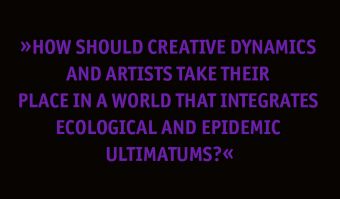
avant-garde, institutional spaces, or the oppositions between the arts from the street and those from the academic training. Of course, our time amalgamates, and everything becomes „art and culture“. Every evening we declare the death of art, and every morning it is reborn. With or without ashes.
One of the characteristics of our time is the capacity of artists to perform, to hybridise, to „hack“ techniques and technologies. An exploration that becomes polysensorial, simply listening to our senses. And it is in the search of the sense, of our senses, that the artist must create a new place and put his talents, his imaginations in the service of new social hybridisations. More and more of us are questioning ourselves, taking a step back. The artistic approach is a powerful one in a world where the link between the real and the virtual, between the physical and the digital spaces, between the material contents and the 0 and the 1 becomes more and more tenuous. The notion of a digital mirror world to ours, the umpteenth desire to live an increased polysensoriality in other spaces, materialises in the metaverse, a new Eden offering countless horizons. Let’s keep in mind the words of J.R.R. Tolkien in order „not to confuse the prisoner’s escape and the deserter’s flight“: embracing virtual worlds is in no way a flight, but a relevant anchoring to reality. To appropriate parallel digital worlds is not an ultra-modern obsession, unconscious of the stakes and dangers; it is, on the contrary, an opportunity to make those digital worlds deeply human and at the service of humans.
Artists are now producing hybrid works and exploring advanced
technologies for offbeat and sublime realisations. They also give impetus to applications that go far beyond the cultural sector. When Martin Cooper, a Motorola engineer recruited in the early 1970s, built a portable radio by trying to reproduce Captain Kirk’s “Communicator“, he invented the cell phone. The list goes on and on of other inventions, imagined by the creators of Star Trek, that have inspired companies and are now part of our daily lives: the “replicators“, ancestors of 3-D printers; the „Universal translator“ in charge of communicating beings and aliens from all galaxies, today revealed in automatic translation software, algorithms and artificial intelligence (AI); and the freehand kit of Lieutenant Uhura, the “tricorder”, which allows the user to detect and scan diseases, present today in almost all Internet of Things and wearable tech, but also giant screens, video calls, tablets, and of course PCs.
Back to the present: do you know Fragile? This installation, created by the Italian multidisciplinary studio, Fuse, explores human and organic life in its works. The installation, with evolving visual effects, is based on an algorithm that collects tweets to predict the level of stress they generate. As social networks are spaces that bring together an important part of humanity, the work gives a vision of the level of anxiety and, by (black) mirror effect, of the well-being of the actors of these networks. Among other fascinating disciplinary crossings, the TakT duo, building on the advances of neuroscience to understand our emotions, has designed an audiovisual work called „Scientific Emotions“ which deciphers our emotions through both artistic and scientific imagery.
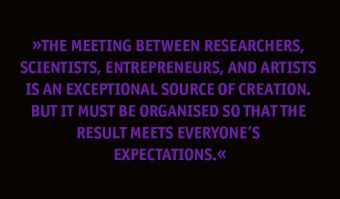
New rules of the game
This context seems to be conducive not only to the reaffirmation of the place of artists in the economic and social ecosystem, but also to the intersectoral spread of talent. The multiplicity of paths, training, decentralised learning, the possibility of combining disciplines and fields of expertise change the rules of the game. In concrete terms, encounters with artists must multiply and go beyond the cultural and creative sectors. The image of the artist as an entertainer, or even as someone who is unfit for scientific and economic rigour, is long gone. This image is not only caricatured but also light years away from the reality of an artist who, like a scientist, relies on the senses, his intuitions to create, invent, draw, compose, repeat, make mistakes, take up again, undo, redo, in a long-term iterative creation cycle. The meeting between researchers, scientists, entrepreneurs, and artists is an exceptional source of creation. But it must be organised so that the result meets everyone’s expectations. The good news? It’s an equation that works every time! On a regional, national, and European scale! Examples are coming from all over the world, at the crossroads of all knowledge: research on biomimicry, which takes nature as a starting point and inspiration, is becoming a reference: from politics to medicine, from the arts to logistics, the behaviour of organic and animal species are rich in lessons and solutions. Bulletproof vests? Born from the observation of the resistance of spider threads! The physical-chemical engineer Kalina Raskin announces that life will endure without us. From now on, she is looking for ways to make different forms of life cohabit within the framework of a responsible innovation that considers the rhythm of nature, and this, thanks to… groups of thinkers from different „worlds”. Inspiring, isn’t it?
Mixing the worlds: a winning solution for the future
Desperately (really) seeking creative co-working
Today, no one questions the crucial role of collaboration in innovation: between brands, between teams of the same company, between teams of companies from different sectors, between generations, between countries, etc. However, the holy grail has not yet been found for an implementation on a European scale that would make it possible to embody these transdisciplinary collaborations on a large scale. We remember the innovative European programs, notably Kaleidoscope (one of the first financial support programs for artistic creation and cooperation, 1996-1998) and Culture 2000 (2000-2006), with disparate effects at European level. How to make collaboration between actors and territories concrete without confusing team-building and innovation?
This European ambition needs a program with a relatively long timeframe so that fertile crossings materialise and that tomorrow, an Italian neuroscience laboratory works with Swedish designers to
create a new banking service, a Dutch dancer gives new foundations to a German algorithm to facilitate inventories in warehouses, a Slovenian AI researcher relies on a French designer to invent a new industrial co-bot, a Portuguese musician virtualises a new Belgian technology to lay the foundations of a humanised call centre, a Luxembourgish quantum physicist makes new discoveries thanks to a Finnish photographer to secure protocols… It is a strong impetus that must be given so that examples do not just multiply but become a Pavlovian reflex for innovation. Will the European Knowledge and Innovation Community (KIC) for the cultural and creative sectors make the magic possible? The stakes are high and concern all stakeholders: companies have concrete innovations for their products or services, explorations but also managerial transformations; research renews its opportunities for opening up, highlighting its skills and contributing to the attractiveness of the scientific field; artists benefit from unprecedented industrial and scientific means to create an ambitious „work-innovation“. Concrete and successful examples of this approach exist. CreativeTech has produced several in France, notably, in the Pays de la Loire region.
Culture is future
Culture au Futur© (Culture is Future) is a transdisciplinary innovation and creation project conceived by CreativeTech for the Pays de la Loire region in France. This original program allows the creation of „innovation-works“ in the framework of workshops bringing together a company, one or more researchers in a scientific field and an artist (or a collective of artists). In other words, it is a question of simultaneously mobilising the cultural, economic and scientific actors of a given territory. The result is startling. The originality lies not only in the method invented by CreativeTech but also in the place of artists in the innovation process: it is indeed the artists who give the initial impulse to the collective work. All industrial sectors, all research fields and all artistic disciplines are concerned. The “innovation-works” already produced reveal the capacity of the trinomials to jointly respond to societal issues (ecology, recycling, over-cycling, acoustic waves, future industry, economic cycles, …) and technical issues (stabilisation of pigments, data restitution, remote control by algorithm or application…).
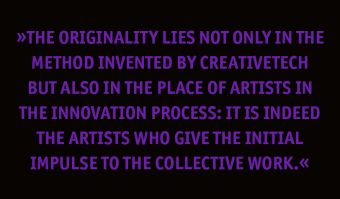
Pascal Denoël, President of the ZeKat Group, who participated in season 1 of Culture au Futur,sums up the experience as follows: „You abolish all boundaries. Everyone must create according to their technological and artistic sensibilities and within a project that has a dimension that goes beyond the company; everyone must remove their own barriers. At this point I see my collaborators differently as a leader, but they see each other differently. People talk to each other more easily and respect each other much more easily. (…) And the result is tangible: the technological innovations that were conceived together are going to be found in our products, to be marketed. And the spectacle is magnificent.“
Europe strikes back
It’s a credo that Europe is starting to put into action thanks to some truly original programs that think big in space and time. This is particularly the case with the audacious S+T+Arts program launched in 2015, where the world of technology brilliantly meets that of artists. Bringing worlds together also means bringing together nationalities and cultures. The Erasmus program embodies this brilliantly: bringing students together and benefiting from the lessons of other countries to enrich their future professional lives. The good news is that Europe is home to 23 million companies, 2 million scientists, and 1.4 million artists. What are we waiting for to make the intersection of disciplines for innovation the European trademark!
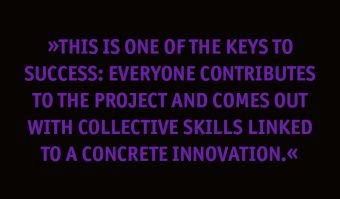
Human first! People at the heart of the transdisciplinary process
Yoga positions: Aligning humans in the centre of our path
The mantra seems „simple“: put in the same space (physical or virtual) a company, a scientist, and an artist. This collective star alignment requires a dedicated environment and a marked methodology to go beyond the often-deceptive concepts of hackathons or lightning exploration projects. It is indeed about combining mind and body, through rituals, a lot of discipline and a lot of intellectual flexibility but not only! Sonia Bergeot, planner for the Colart Fine Arts group of materials, saw the alchemy take place during the workshops of season 1 of Culture au futur: „The manipulation of products with chemists and artists awakens new inspirations for future developments of products or services for the company. That’s where the magic happens.” The credo is that each stakeholder—artist, researcher, company employee and animators-conductors of the “work-innovation”—highlights their own skills, without disguising themselves, in a spirit of curiosity. Indeed, it is a question of giving the best of one’s way of being, thinking, working, and interacting with worlds foreign to yours. This is one of the keys to success: everyone contributes to the project and comes out with collective skills linked to a concrete innovation. A great community of CreativeTechers is born.
The creation of artwork-innovation—“it's alive, alive!”
Within the framework of our interventions, we work on projects at the crossroads of innovation and creation. For example, a company making clothes for professionals had the ambition to think about tomorrow’s work clothes, by collecting data on individuals, to limit difficulties at work. A visual artist poetically re-examined the materials in order to illustrate the dynamics of the company immersed in issues of health and well-being at work. Cross-fertilisation also led us to the hacking of a Smart Guitar with the aim of completely reinventing the scenography of a show and the way in which one can remotely control the instruments on stage thanks to a virtual reality headset and a gyroscopic application. Or a textile manufacturer of more than 200 wished to re-examine the life cycle of its materials and, thanks to the crossed views of researchers in acoustics with that of an artist specialized in the fold, the company was able to upcycle these dormant stocks. The latter were transformed into powerful soundproofing sheets! What a smart collaboration…Ultimately, applying the CreativeTech’s methodology empirically means creating hybrid project methods according to the realities of the actors involved, guided by the same desire: to create a work and find an operational solution to a business problem in a “win-win” and transgenerational logic. Europe is the new playground, and with its protean resources, the possibilities are endless. Finally, some good news!
Join the CreativeTechers’ generation
The winning equation—companies x scientists x method artists x humans—is on its way to be disseminated in Europe. Our famous equation is endowed in—take note, exhibitors!—a proven method and people ready to take up challenges.
Approximately 4.2 million km2, 27 countries, nearly 90 territories with their own systems of governance, about 400 cities with more than 100,000 inhabitants, soon to be 448 million inhabitants, with Ode to Joy as its anthem—does this sound familiar? What if the result of this winning equation made it possible to create a European „overview effect“ (like the planetary overview effect described by the astronauts) that would sublimate all our creative resources in order to deploy a collective and enthusiastic vision of the future in the territories, regions, länders, provinces, and departments of all of Europe. „Arts and Crafts“ reinvented in the 21st century: easy, right?
“The history of science is not only the history of the constitution and proliferation of disciplines, but at the same time the history of the rupture of disciplinary borders, of the encroachment of a problem of one discipline on another, of the circulation of concepts, of the formation of hybrid disciplines that will end up becoming autonomous; finally, it is also the history of the formation of complexes in which different disciplines will aggregate by agglutinating themselves. In other words, if the official history of science is that of disciplinarity, another linked and inseparable history is that of inter-trans-poly-disciplinarity.” Edgar Morin2
References
1 Marc Lhermitte, Hugo Alvarez, EY, January 2021. https://www.ey.com/fr_fr/government-publi-sector/panorama-europeen-des-industries-culturelles-et-creatives-editio.
2 Edgar Morin, “La méthode”, 1981.
CreativeTech
Being: together! Born 2017, CreativeTech is a cultural engineering agency that orchestrates the meeting of artists, scientists, entrepeneurs to generate go-to-market innovations and exhibitions, both in digital and physical locations. This synergy of points of view, experiences and expertise embodies the current hybridization of profiles in all the industries. This Bigbang delivers supernova.tive makers and thinkers and constitutes the DNA of CreativeTech methodology.
Inspiring the future! CreativeTech also strives to think optimistically about the future, always integrating a responsible and conscious approach to social and environmental issues in the different territories. The aim: developing operational innovation for companies as well as institutions toward contemporary questions, such as living in the age of the blockchain and metaverse, hacking Time and Space, tapping into neuroscience to decipher the power of our emotions… to inspire all of us.
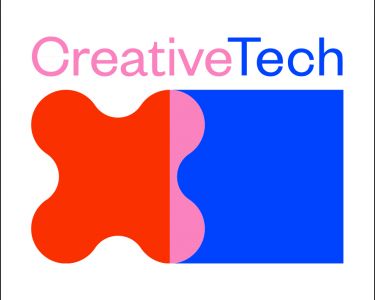

Preface to The Next Renaissance
Minister of Economic Affairs, Innovation, Digitalization and Energy of the State of North Rhine-Westphalia
Preface
Europe is undergoing a period of fundamental change. Whilst this comes with great challenges, we ought to recognise the enormous opportunity behind it. The top five issues of our time in all their complexity – globalisation, digital revolution, climate change, pandemics and natural disasters – are adding extra urgency to the question of where our European society is – or should be – heading. What do we want the future to look like? How are we proposing to get there? What type of innovation do we want to push forward for the benefit of our society? Those are questions of real concern.
Renaissance and its synonym, ‘rebirth’ are words that evoke inspiration. After all, the Renaissance period was marked by a variety of major innovations in art, science, technology, architecture and the trades. The ‘discovery of humanism’ was the game changer. Artists like Leonardo da Vinci, Artemisia Gentileschi or Albrecht Dürer are testimony to what really transformed things back then – the recognition of humans as subjects and as a creative and innovative force.
This wealth of ideas, of human creativity, needs to be called upon once more. We must use the potential of innovation in all its variety and simultaneity across economy and society and use it to get on top of the big challenges – digital transformation and the move towards climate neutrality by 2045. The key to innovation will always be the combination of creativity and technology.
The digital revolution has a huge impact on our proven concept of a democratic and liberal Europe. Future technologies such as artificial intelligence or blockchains hold enormous potential for innovation that we must exploit, but responsibly and in line with ethical values. Digital transformation of public services is the key to instilling trust in the work of government.
The transition to a climate-neutral economy and society is going to affect, if not upturn, all walks of life. We need renewable materials for the circular economy, new architectural and transport strategies, realignment of the energy system and forward-looking town planning philosophies.
There is a multitude of options for creative minds, innovative approaches and new business models. A major role is already set aside for the creative industries when it comes to realising the ‘European Renaissance’ envisaged here.
So, the EIT initiative to start a Knowledge and Innovation Community for the creative industries comes at the right time. North Rhine-Westphalia is backing the first-rate application that has been submitted for the launch of a creative industries KIC. The idea is that, over fifteen years, this agency will be spending some 500 million euros on innovation in the creative sector, designed to address the big challenges Europe is faced with. Such investment will be in line with the principles governing the Knowledge and Innovation Communities which the European Institute of Innovation and Technology (EIT) launched the first call for in 2008, banking on the interaction of education, research and innovation.
In these fast-moving times, the resourcefulness and innovation prowess of the creative industries are needed in Europe more than ever. The sector embodies crucial abilities, something that is more and more appreciated. The World Creativity and Innovation Day has been amongst the United Nations’ official theme days since 2018. In 2020, the World Economic Forum placed creativity at Number 3 of the ’TOP 10 Skills Needed’.
Europe needs to return to the heydays of ingenuity and innovation fervour. With a view to a European Renaissance of creativity, the ICE consortium is providing us with this publication which covers a wide spectrum of topics and will surely make for inspirational reading.
Prof. Dr. Andreas Pinkwart
Minister of Economic Affairs, Innovation, Digitalization and Energy of the State of North Rhine-Westphalia
Prof. Dr. Andreas Pinkwart, born in Seelscheid, Germany in 1960, after a banking apprenticeship he studied macroeconomics and business economics at the University of Münster and the University of Bonn from where he obtained his doctoral degree in 1991. He subsequently ran the office of Dr. Hermann Otto Solms, chairman of the FDP parliamentary group in the Bundestag, before continuing his academic career with professorships in Dusseldorf and Siegen. In 2002, he became a member of the German Bundestag and state chairman of the FDP (Free Democratic Party) in North Rhine-Westphalia. From 2005 until 2010, he was Minister for Innovation, Science, Research and Technology as well as Deputy Prime Minister in North Rhine-Westphalia. In 2011, he returned to the scientific sector. Until June 2017 Prof. Pinkwart was Dean of the HHL Leipzig Graduate School of Management and and ever since holds the Stiftungsfonds Deutsche Bank Chair for Innovation Management and Entrepreneurship. Since June 2017 he is Minister of Economics, Innovation, Digitalization and Energy of the State of North Rhine-Westphalia.
Picture © Ministry of Economic Affairs, Innovation, Digitalization & Energy, NRW
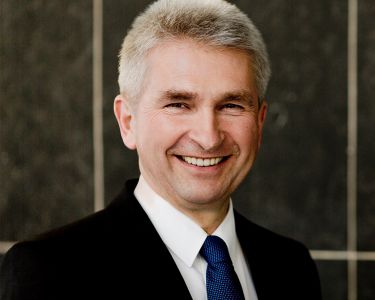

Intellectual Property and the Industry Commons
Industry Commons Foundation
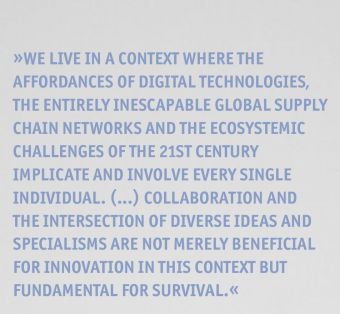
Intellectual Property and the Industry Commons: Unlocking the Renaissance
Recognised as a major influence on economists, Leonard Reed’s 1958 essay ‚I, Pencil’ demonstrated that the invention of even the simplest of objects is the result of mass collaboration. A pencil is made by loggers, graphite miners and factory workers. Its form is predicated on the invention and widespread adoption of writing and drawing, and it requires an ecosystem of other technologies from pads of paper to marketing and distribution networks. The workers involved need to eat food and travel to work, and this all takes place within an elaborate economic and social web.
As interwoven, interdependent, cross-disciplinary and intricate as those systems were, Reed could not have foreseen the world to come. The extent to which the processes, raw materials and interconnected networks would become exponentially and globally more complex sixty or so years later would have been absolutely unthinkable. What had been the paradigm-shifting impact of Reed’s observation now needs to happen again at the next order of magnitude. We live in a context where the affordances of digital technologies, the entirely inescapable global supply chain networks and the ecosystemic challenges of the 21st century implicate and involve every single individual. We can no longer extricate ourselves from those global systems. Collaboration and the intersection of diverse ideas and specialisms are not merely beneficial for innovation in this context but fundamental for survival.
These intertwined framework conditions and cross-domain technological affordances lend themselves to the design of new supporting frameworks that are more inclusive and equitable. For the first time ever, the acceleration of industrial digitalisation provides an opportunity to build radical or disruptive innovation on top of existing intellectual property (IP), in a system that is fully trackable and accountable for all involved. Our tests conducted in the past five years2 demonstrate that ensuring traceability and attribution creates a powerful incentive to share data and other assets across fields, sectors and industries, helping humanity embrace innovation with greater motivation and efficacy than ever before.
Intellectual Property is a broad, complex and discursive area of study, subject to critique as a preventer of innovation and as a barrier to the creation of new ideas. Its fundamental condition as a category of property law has led to its status as a domain of guarded ownership, complicated routes to permission and a punitive legal minefield with steep costs for infringement – intentional or otherwise. The default position for access to industry IP has long been a blanket ‘no’ except under exceptional, usually expensive circumstances.

IP regulation has not followed the evolution of IP value creation.
In his ongoing quest to find out more about how people create and innovate, Professor Brian Uzzi, a professor of leadership at the Kellogg School of Management, Northwestern University, and his team, measured the citations of every paper available in the Web Of Science, a repository of some 30 million scientific papers dating from the early 1900s to the present day.3 The articles with the most significant impact, he discovered, were collaborative. “Since 1950, teams have become more prevalent as a production mechanism,” he said in an interview for the BBC podcast Sideways.4 “Teams are getting bigger over time, [and] they are three to four times more likely to write a hit paper or produce a hit patent than individuals.”
He also noted that these teams were primarily composed of specialists from different disciplines: “Biologists working with economists and anthropologists, or historians working with big data experts and ethnographers.” This meeting of minds across boundaries is known as recombinant innovation, and it has an impressive track record of helping humanity make significant strides forward.
Fear of sharing IP, however, is deeply embedded. Sandra Vengadasalam of the Max Planck Digital Library describes how researchers feel about the issue: “If you ask them ‘What are you afraid of?’ – and it doesn’t matter which discipline – it’s ‘Oh, I’m super afraid to get scooped’.” In other words, there is strong concern that colleagues or competitors will steal a march on you and publish first. “It starts when you want to share your PowerPoint presentation, some pictures of your last microscopic data, whatever,” she continues. “There’s always the fear of ‘Okay, what can I give out? And what about my intellectual property?’”5
In the corporate world, the issue of IP is broad, complex, and carries significant responsibility for erecting barriers to ideas and holding back innovation. Indeed, amongst the closely guarded IP locked away by industry lies a substantial proportion of the estimated $100bn value of data sharing. But this isn’t simply an issue of trust. There can be problems relating to interoperability and conflicting standards, which make sharing difficult, despite the obvious benefits of overcoming them.
Take the example of driverless vehicle data. In 2017, Chris Ballinger, Toyota Research Institute’s CFO and Director of Mobility Services, estimated that it would take ten years for any single company working in the field to collate all the information they need about roads and infrastructure.6 That information is almost instinctively placed under lock and key as it is collected. But if the data is shared between, say, nine other competitors, it could be gathered in a single year, allowing much more rapid progress to market. By pooling information and standardising interoperability, everyone would, metaphorically speaking, be using the same railway tracks.
To increase the value of IP, we need to operate on common railway tracks.
In his book How Innovation Works,7 Matt Ridley lists endeavours for which the free sharing of ideas was pivotal: “…the Dutch East India company’s cargo ship, the Fluyt; Holland’s windmills; Lyons’ silk industry; crop rotation in England; Lancashire’s cotton spinning; America’s engines for steamboats; Viennese furniture; Massachusetts paper makers…” He also notes: “It was the flowering of societies, clubs and mechanics’ institutes that gave Britain its lead in the Industrial Revolution.”
Just as societies and clubs provided meeting grounds and shared points of cultural connection, it is necessary to now share spaces of common understanding with culture as a pivotal element, and creativity as both facilitator and the reason for coming together. For the past decade, MTF Labs has demonstrated that music provides that shared cultural touchpoint, common ground, creative spark and “social glue” that connects otherwise divergent minds.
Music thrives on the melding of diverse perspectives. For instance, the ongoing global success of the Swedish songwriter Max Martin has relied on an extraordinary list of collaborators: death metal artists, classically trained pianists, musicians from Barbados, India and beyond. This has contributed to Sweden being the number one country in the World for music exports per capita.8 Writer and thought-leader Matthew Syed argues that pop music has become the “recombinatorial art form par excellence,” a product of “the constant search for the sweet spot of musical collaboration.”
Crucially, those collaborations are supported by an advanced IP framework, thanks to more than a decade of work by the music industry to develop platform alignment for metadata. That industry is also starting to adopt systems for rights registration at the point of creation, such as Sweden’s Session, now used by Spotify and YouTube,9 which can unlock hundreds more millions of euros in untapped value. The Industry Commons IP Framework Study (2021)10 identified several cross-domain use cases where this kind of approach to IP management is already speeding up time to market. Equally, expanding one’s sphere of influence may uncover unexpected markets. A study of the expansion of the European Open Science Cloud revealed that its FAIR system of data sharing (findable, accessible, interoperable and reusable) turns into a system of data valorisation when deployed by commercial organisations.11
The unlocking of an interoperable Industry Commons of data-driven assets also provides creative innovators with the opportunity to generate new ideas that include intellectual property owned by others. Placing a wealth of existing research, R&D, products, designs and creative works into the hands of creators radically accelerates the innovation process, provides rapid knowledge transfer across domains and carries the potential for cross-sectoral and hybrid projects that could not have taken place within an individual industry vertical or organisation.
Pablo Garcia Tello, Section Head of New Projects and Initiatives at CERN, calls this “The New Alexandria”, inspired by the colossal library of the ancient world, which contained more than 400,000 scrolls and was available to anyone and everyone. Whatever you may take from The New Alexandria, he says, the rule is that you give something back. This would, in his words, “democratise knowledge and innovation while giving credit and recognition to the creators.” Such an innovation ecosystem could, he believes, help to integrate cross-disciplinary innovation and entrepreneurship.
Christer Gustafsson, Professor of Sustainable Management of Cultural Heritage at Uppsala University, believes the innovation that such systems could unlock goes beyond mere economic value: “My focus today is to more-or-less completely change the mindset from starting with this ‘protection oriented’ idea… It could be the change from an industrial society to a post-industrial society.”

IP valorisation is dominated by systemic inequality.
Patenting is still by far the most commonly used system of IP valorisation, even though it still carries the signs of the era that launched it, when married women were not allowed to own any kind of property:
Women do not get a fair share when it comes to patenting and are far less likely to own patents. This disparity is in part because of not only the inherent biases in science and technology and in the patent system itself, but also because of the high costs of even applying for patents. […] Patents are a glaring exception to the unregistered protections provided in other areas of intellectual property, which are more egalitarian in design.12
Currently, European patent granting procedures are expensive, slow (three to five years, on average), burdened with obscure legal terminology and fraught with problems relating to the definition of ideas and similarity to other patents. IP Screener13 makes a powerful case for making all patents findable with AI-assisted technologies, so independent inventors can affordably source and track existing inventions using plain language, build their knowledge from existing inventions and avoid infringing on protected IP.
To the minefield of gender and economic inequality for independent inventors, data-driven systems introduce additional challenges for IP management. Bias inherent in data sets, problems with data provenance verification, and risks of negative impacts on social behaviours have prompted industries to increase the demand for testing of new data-driven industrial applications in low-risk “living labs” environments. This allows them to capture unexpected outcomes from novel applications of frontier technologies before deploying them at scale. The core assets of manufacturing and industrial production have all become digitised, and all industries are now data industries. As data becomes a critical raw material and crossing streams becomes much easier, the risks to widespread bias become all the greater.
Allowing data provenance to remain in the black box presents an enormous risk for society. While this points to a growing need for new regulation and standards for data markets, it also enables new economies and value systems, creating a major new economic paradigm for society. Solving how IP attribution and provenance work in data markets can result in an explosion of new types of innovation, and as data becomes central to every industry vertical, tracking innovation enables unprecedented exploitation of diverse global market segments.
To move the paradigmatic shift of Reed’s “I, Pencil” to the next order of magnitude, a shared commons of trackable, traceable and easily licensable assets must be provided as fuel for a creative and economic renaissance enabled by an explosion of human ingenuity and motivated by the 21st Century’s ecosystemic challenges. We cannot separate ourselves from those ecosystems – or from each other. Whether a pencil, an AI platform, a novel musical instrument or an RNA vaccine, innovation is a major enabler for people to benefit from each other’s contributions. This is what society is for – or should be. It is, therefore, necessary to embrace radical inclusion and stop thinking in terms of ourselves as separate entities with individual characteristics, capabilities and (self-)interests. Instead, let us start with the question: Where do we converge?
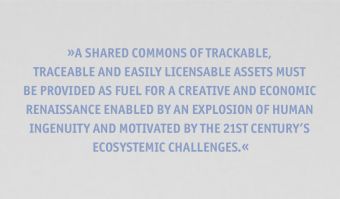
REFERENCES
1 According to Harvard Business School Professor Gary Pisano, incremental innovation for existing competencies and business models is routine; radical innovation builds new competencies for an existing business model; disruptive innovation proposes a new business model for existing competencies; and architectural innovation introduces both new competencies and business models. (Pisano, G. 2019, Creative Construction: the DNA of Sustained Innovation, PublicAffairs).
2 Experiments with creative innovation communities in partnership with blockchain technology companies and other decentralised platforms at MTF Labs in Helsinki, have demonstrated that it’s possible to establish new ways of recording, tracking, and tracing intellectual property live, in real-time, at the point of creation, using distributed ledger technology. These ideas have been codified and scaled up in the Industry Commons IP Framework study (2021).
3 https://insight.kellogg.northwestern.edu/article/science_as_team_sport/
6 Fortune Magazine, 22 May 2017: http://fortune.com/2017/05/22/toyota-mit-blockchain-driverless-cars/
7 Ridley, M., 2020. How Innovation Works: and why it flourishes in freedom, Harper, NY
8 Export Music Sweden, 2020: https://report2020.exms.org/
9 https://musically.com/2021/11/18/rights-data-startup-session-gets-1m-from-spotify-and-youtube/
10 https://industrycommons.net/ip-framework.pdf
12 Marcowitz-Bitton, Miriam; Kaplan, Yotam and Michiko Morris, Emily (2020). Unregistered Patents & Gender Equality. Harvard Journal of Law & Gender.
Michela Magas
Michela Magas is a designer who bridges the worlds of science and art, design and technology, academic research and industry with a track record of over 25 years of innovation. She is innovation advisor to the European Commission and the G7 leaders, member of President von der Leyen’s High Level Round Table for the New European Bauhaus, and member of the Advisory Board of CERN IdeaSquare (ISAB-G). In 2017 she was the first woman from the creative industries to be awarded European Woman Innovator, and in 2016 she was presented with an Innovation Luminary Award for Creative Innovation by the European Commission and Intel Labs Europe. She created the concept of the Industry Commons which has galvanised European industry around cross-domain data interoperability. She is the Founder and CEO of Stockholm-based MTF Labs, a global community platform of around 8000 creative innovators and scientific researchers, which provides a test case for innovation in areas as diverse as neuroscience, forestry and microcomputing. For 20 years she ran Stromatolite Design Lab in London creating design futures with global clients such as Apple, Nike and Nokia.
Picture © Nebojsa Babic square

Andrew Dubber
Andrew Dubber is is an author, academic, public speaker and broadcaster, Director of MTF Labs, and Steering Board Member of the Industry Commons Foundation. He has written extensively on the digital transition, cultural identity in popular music, and social innovation in the cultural sector, including Radio in the Digital Age (Polity, 2013) and Understanding the Music Industries (Sage, 2012). He is the manager of Erasmus+ projects about STEAM education and is an active participant in EU Horizon projects about innovation and the Creative Industries. Until 2015, Dubber was UK Arts and Humanities Research Council Knowledge Transfer Fellow and Professor of Music Industry Innovation at Birmingham City University’s Centre for Media and Cultural Research. As an academic he led and contributed to practice-based research and Knowledge Exchange projects focusing on digital mediation, intellectual property, the creation of meaning from media objects within social and cultural networks, and innovation for social change. As an early adopter of new media platforms, Dubber has been blogging since 2002 and podcasting since 2004.
Picture © Michela Magas
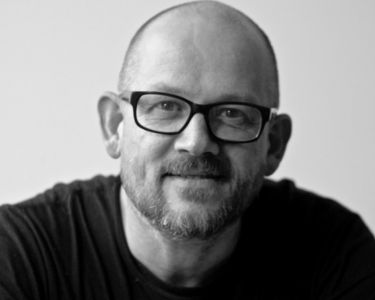
Rhodri Marsden
Rhodri Marsden is a writer and musician based in the UK. He was the technology columnist for The Independent newspaper from 2006 until 2016, and subsequently took on that role for The National, a leading English language paper based in the UAE. His other writing, on subjects ranging from male-pattern baldness to amateur perfume makers, have appeared in dozens of publications including The Guardian, i, Daily Telegraph, New Statesman, The Times, Glamour and Cosmopolitan. His annual fundraising efforts for the homeless every Christmas Eve on Twitter provided the catalyst for his most recent book, A Very British Christmas. A sought-after producer and musical director, he had an unlikely top 20 iTunes hit in 2019 with a disco album on the subject of Brexit, and he continues to perform as part of the much-loved pop group Scritti Politti.
Picture © Laura Ward


Space race for the people
Director of the European Cultural Foundation, Amsterdam

Space race for the people
A call for a European Public Space Programme
Europe needs a Space Programme. But instead of racing to outer space, as seems fashionable among global powers and private zillionaires, Europe’s Space Programme should be earthbound and race to reach the people of Europe. Creating a functioning European public space will not only fire up all sorts of technological innovation but most importantly strengthen a European sense of belonging, a European society of sharing and enable a 21st-Century Renaissance.
We are living through pandemic times. As well as Covid-19, there is a climate pandemic, a pandemic of inequality, a pandemic of polarisation. These individual pandemics are interconnected and together they are creating unpredictable dynamics. There is no way back to a normality which had already become increasingly self-destructive.
Human history has shown that crises can also be times of opportunity, creativity and invention. The 14th to 16th centuries were times of brutal power struggle, never-ending wars, Black Death and misery. But they also unleashed a movement of radical transformation, discovery and beauty, the first European Renaissance. Can our times unleash a similar creative boost? Can our times give birth to a 21st-Century Renaissance? Future generations will be able to tell. Our job is to make it happen.
Here is one element which I consider vital for the next European Renaissance to succeed.
Our public and civic spaces are shrinking, more restricted, more segregated, more commercial and covered in advertising. When governments turn autocratic, public spaces are especially vulnerable to mass surveillance abuse and manipulation.
The European public space is nascent. Where it exists, art and culture have been its forerunners. Look at the range of European orchestras, festivals, exhibitions, pop culture and architecture, Eurovision and the Champions League.

National filter bubbles
What do I mean by public space, anyway? Isn’t this just another abstract European buzzword? Well, yes and no. Yes, we should not waste time on hot air that distracts from real issues. And no, because we often fail to find common European answers to common European problems because we don’t have an effective space and mechanism for working things out. Maybe the Brussels bubble does, but the European public doesn’t—and that’s no longer good enough.
Our awareness of what’s going on around us is still largely determined by our national context and reality. We are still trapped in national filter bubbles. We adopt a national perspective on European issues such as pandemic responses, migration, the Euro, data security, energy, climate crisis, unemployment and tax evasion, seeing them in terms of national actors and national interests. But what would the solution to the European debt crisis have looked like if we had dealt with it through a truly European lens? Might the Germans have called for a European approach to refugee policy, not only when refugees arrived in Germany but already years earlier when Greece and Italy struggled to cope with rising numbers of boat people, had they taken a more European perspective to begin with? Could Victor Orban’s wacky conspiracy theories have gained so much traction if the Hungarian people had been part of a truly European public space and independent European media space?
A structural problem
Digital technology is making this challenge even greater. The internet could be a space for global enlightenment, but instead it risks becoming an anti-Enlightenment echo chamber. The digital filter bubble is narrowing our horizons to our own social media environment and likes. Those who understand how to play the filter bubble game best win attention, market share and elections.
The digital European public space has been colonised by non-European private platforms with little regard for democratic values and privacy standards. They have profited massively—and still do—from the systematic exploitation of European data, without paying their fair share for European content and for extracting billions and billions of Euros from European users while free-riding the European digital space. A genuine European public space is of little interest to the click-economy apart from data mining and maximising advertising revenue.
At the same time, the business model of quality journalism is being eroded. This is becoming a systemic risk for Europe and a threat to democracy at large.
In addition, in some EU countries even the national public space is coming under pressure: If media pluralism and independence are disappearing in places like Poland and Hungary, this has a direct effect on the whole way in which the EU operates and sets standards, or not.
Hence it is not surprising that we lack a shared understanding of problems and opportunities, let alone on finding genuine European solutions. In the long run, our European community, our European Democracy will flourish only if supported and controlled by a functioning European public space rather than fragmented national ones.

What to do?
We need a European Space Programme, a public space programme that connects people and is meaningful, safe, open for creative opportunities and inclusive. We need to invest in a European public space that offers a framework for togetherness, for exchange, for real European communication, for us all and not just for a select few. This task cannot be left to the invisible hand of the market, or be surrendered to operators like Meta/Facebook, Starbucks and Alibaba. This is about identity, democracy, and the future of the European model.
The European Space Programme must guarantee freedom of speech and maintain diversity without becoming mired in bureaucracy. It must not become a propaganda tool for the European Union in any way and must be subject to clear and credible governance.
This Space programme should support all formats which create a European public space, digital, analogue, as well as innovative combinations of the two. This includes European media, European social media platforms, games, but also festivals and events like Eurovision, awards, library networks and all kinds of other things we can scarcely dream of today.
The multilingual advantage
The killer app will be a solution to the language challenge. The EU has 24 official languages and a whole lot of semi-official ones. This makes it naturally more difficult to create a public space than in a community with only one language. Europe should take on this challenge proactively by exploiting the rapid development of digital translation technology. Serious investment in a multilingual public space will have spillover effects into other areas of our societies, and could be a key element of Europe’s innovation policy.

Show me the money
Space programmes cost money. We should be prepared to spend a multitude on a functioning, fair and inclusive public space on earth rather than spending on reaching outer space. Apart from sufficient funding, a successful initiative for a European public space will require a balanced mix of good governance, appealing formats, effective distribution channels, cutting edge language technology and fair regulation. What sounds quite straightforward will indeed mean squaring the circle, or put more optimistically, will be one of Europe’s most exciting and innovative ventures for the next decades—no less than a European Space Programme.
Much of the money needed could come from fees on big digital platforms like Facebook, Google and Twitter. This fee for platform providers will be part of financing the European public space and enable the currently dominant digital platforms that are already profiting from a borderless Europe to contribute to a functioning and healthy European public space. Protecting people’s personal data, and minimising the amount of advertising they are exposed to, can and should be a competitive advantage and a must for the European public space.
Creating a European Public Space is a big task. But there is a lot at stake: identity, democracy, freedom and the future of the European model. Over the past years, we have had many opportunities to see what can happen when civic public spaces are neglected and taken over by post-factual filter bubbles. That is why we need to invest in a European Space Programme to power up the Next European Renaissance.
André Wilkens
André Wilkens is the director of the European Cultural Foundation in Amsterdam which mission is to grow a European sentiment and in response to the Covid19 crisis has launched the Culture of Solidarity Initiative. André is also the Board Chair of Tactical Tech, the co-founder of the Initiative Offene Gesellschaft and a founding member of the European Council on Foreign Relations. In the past he worked as Strategy Director of Stiftung Mercator, as Director of the Open Society Institute Brussels and as Head of Strategic Communications of UNHCR in Geneva. André is the author of two books, on Europe (Der diskrete Charme der Bürokratie, S.Fischer 2017) and on Digitalisation (Analog ist das neue Bio, Metrolit 2015), and a regular media contributor.
Picture © Gerlind Klemens


The Game of our Life
Initiator of the GamesForest.Club, Founder and Chairman of GameInfluencer GmbH
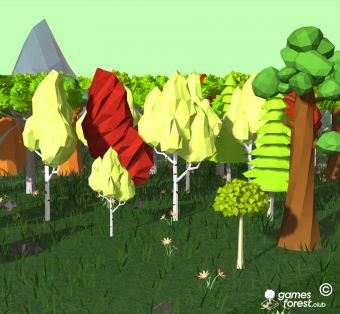
THE GAME OF OUR LIFE – WHY GREENING THE PLANET NEEDS A CULTURAL REVOLUTION
The equivalent of about 30 football fields of rainforest is lost to the world every minute1. As forests absorb huge amounts of carbon, the planet is losing its biggest ally in the fight against climate change.
We have known about the phenomenon of climate change and its causes (greenhouse gases, especially carbon dioxide and methane) since the 1950s. Increasingly, since the 1970s, the huge impact that human activity on this planet has had on climate has been accepted as fact by the scientific community. The central role of forests as absorbers of carbon has been known even longer but education seems to lag behind this knowledge and is yet to compel us to protect forests. We are losing more forest than ever before. Deforestation in the Amazon was at a record high in 2020 and massive forest fires in recent years around the globe have intensified the effect. 2020 was the planet’s hottest year since records began.
Without putting a stop to deforestation, even transforming the biggest carbon releasing industries will be insufficient to prevent environmental catastrophe.
How to realise such transformations has been an ongoing concern for decades—in the scientific community as much as in the industries themselves. Industries have, for example, invested heavily in Smart Cities for Green Cities, in new battery technologies and ever more energy-efficient cars. Still, these transformations are stalling while a business-as-usual attitude in science, industry and policy is failing to deliver.
In order to break this deadlock it is high time for novel thinking beyond the mainstream and for new players to bring about transformative change. We propose looking at the climate crisis from the perspective of a global movement that, up to now, has been associated more with climate pollution than with solutions for that pollution: the global culture of some 3 billion gamers.

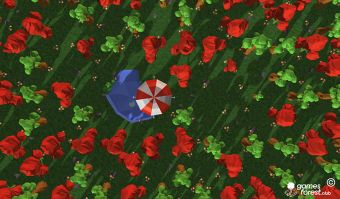
It is known that game mechanics—the elements that produce the gaming experience—can change behaviour. What if this potential were leveraged to support citizens in choosing carbon-neutral or -free products? What if this, in turn, motivated industries to follow new customer behaviour? And what if gamers themselves opted to invest attention, time and purchasing power—a market valued at $175.8bn2 in 2021—in forestation?!
Specifically, we propose to measure and manage carbon footprint and show it in a playful way so as to make the challenge of climate change fun. That’s why we created the gamesforest as a digital twin to our analogue world.
Climate change is, of course, by far the biggest challenge Humankind has ever faced. By the same token, however, with the stakes no less than the survival of Humankind, the journey ahead of us promises to be heroic and full of potential. Luckily, gaming companies know best how to design massive challenges in a way that encourages players to rise to those challenges and to have fun with them.
We’ve already seen huge interest and engagement with the climate change challenge in the games industry. With GamesForest.Club we want to extend that engagement. All restoration activities in real life will therefore be shown simultaneously in gamesforest so we can all keep track of the efforts that the games industry is making to avert catastrophic climate change.
Save the planet playfully!
While saving the planet in playful way might sound like a strange proposition, we must give it a chance. After all, Humanity’s non-playful approach to saving the planet in the last 50 years, say, has not worked out well. Saving the planet playfully is no less than a cultural revolution: a culture of joyful, voluntary choices of the masses joining the cultures of science and policy-making in the service of saving the planet. As Albert Einstein once said, “No problem can be solved from the same level of consciousness that created it.”
Sources
1 Stubley, Peter. 25 April,2005. ‘Enough rainforest to fill 30 football pitches destroyed every minute last year.’
The Independent [Online]. [Accessed 28 January 2022]. Available from https://www.independent.co.uk/climate- change/news/tropical-rainforest-lost-destroyed-football-pitches-every-minute-a8886911.html
2 ‘Global Video Games Market’.
Ukiepedia. [Online]. [Accessed 28 January 2022]. Available from: https://ukiepedia.ukie.org.uk/index.php/Global_Video_Games_Market
All pictures: Copyright by GamesForestClub
Georg Broxtermann
Initiator of the GamesForest.Club, Founder and Chairman of GameInfluencer GmbH
Georg is an Entrepreneur and Business Angel based in Munich, Germany. He is the initiator of the GamesForest.Club, a non-profit company with the goal to protect nature with the power of gaming and together with the good hearts and minds of the games industry. Georg founded the Influencer Marketing and Talent Management Company GameInfluencer GmbH in 2016 and still acts as its chairman. Georg is an active Business Angel and Advisor in several Start-ups, among them Phoenix Games, ThankyouJane and others.
Picture: © Georg Broxtermann
